Results 311 to 320 of 12094
Thread: Anandtech News
-
02-13-11, 03:00 AM #311
Anandtech: The Motorola Atrix 4G Preview
A couple of months ago I had the opportunity to join a bunch of NVIDIA employees for dinner. Among those at the table were Michael Toksvig and Tony Tamasi. Michael, or Tox as he likes to be called, worked on the AA hardware for NV17, NV25, NV40 and G80. He managed to skip NV30. More recently Tox was the chief architect on GeForce ULV, the GPU integrated in NVIDIA's Tegra 2 SoC.
Tony Tamasi is someone I've known for around a decade. I first met him while he was working at 3dfx, and got the pleasure of working closely with him when he later moved to NVIDIA to do technical marketing. Both Tox and Tony are very passionate engineers at heart and are up for a good conversation.
The conversation we had at dinner that night was on the future of the smartphone and the mainstream PC. Tony argued that technically, within 3 years, a high end smartphone will be able to offer the performance of a (low end) mainstream PC today. Admittedly that isn't the highest bar possible as virtually everything above a netbook falls into that category, but it's a valid claim.
Motorola is attempting to jump start that evolution. The Atrix 4G is the second Tegra 2 based smartphone we've received in our labs, but unlike the Optimus 2X it hopes to be more than just a superphone. Equipped with 1GB of memory and the ability to run a full version of Firefox for Linux, Motorola hopes the Atrix 4G will be a smartphone, superphone and netbook replacement all in one.

A couple of days ago I got a package from Motorola. In it was the Atrix 4G, a multimedia dock, bluetooth keyboard and mouse. I'm currently on a flight to Barcelona to join Brian Klug as we cover Mobile World Congress for the first time on AnandTech. MWC is a very large mobility focused tradeshow that's held yearly. From a content standpoint it's like a smartphone/tablet CES.
It takes days for us to run through all of our battery life tests, and usually a couple of weeks of constant usage for us to put together one of our smartphone reviews. With Brian working on the Verizon iPhone 4 and both of us en route to MWC, it'll be a little while before we can bring you a full, in-depth Atrix 4G review.
That being said I wanted to get some of my thoughts out there as this is a highly anticipated device that attempts to do a lot.
What follows is by no means a full review, I wouldn't dream of calling it that. But rather an account of my experiences with Motorola's Atrix 4G thus far. Give me some time after MWC and we'll get a full review up. The Atrix hasn't left my side since it arrived and I'll be using it to keep up with emails and schedule meetings at the show as well.
More...
-
02-13-11, 05:21 AM #312
Anandtech: MWC 2011: LG Optimus 3D and Optimus Pad Announced
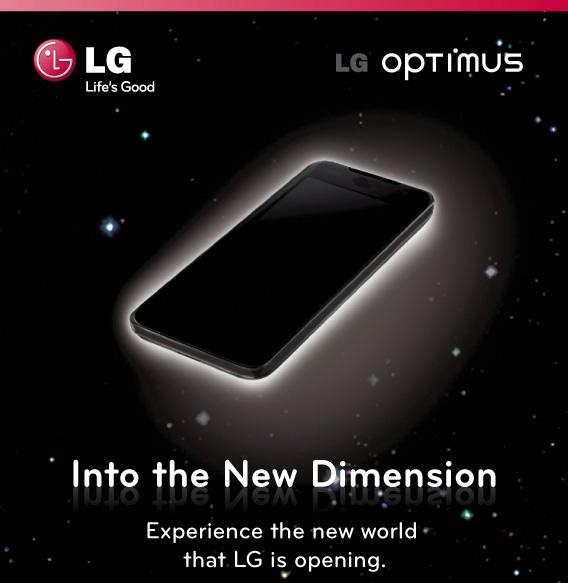
Mobile World Congress 2011 is upon us, and LG is kicking things off by announcing the Optimus 3D smartphone and the Optimus Pad tablet. The Optimus 3D is an Android-based smartphone with a 4.3” screen and a TI OMAP 4 SoC, along with glasses-free 3D viewing promised by the WVGA display and the dual-lens camera used to capture 3D video. The Optimus Pad is a Honeycomb-based tablet running Tegra 2 on an 8.9” WXGA display, with stereoscopic 5MP cameras for 3D 1080p video capture. The Pad is the international version of the LG G-Slate that T-Mobile announced at CES.
Read on for more details about these two new Android devices.
More...
-
02-13-11, 08:50 AM #313
Anandtech: Verizon iPhone 4: Thoroughly Reviewed
After literally years of fruitless rumor, speculation, and waiting, the Verizon iPhone is finally here. It's a CDMA version with almost identical hardware to the GSM/UMTS version which shipped in the summer, with a few small changes and surprises.
Is this the iPhone that loyal Verizon subscribers have been waiting for? Read on to find out.
More...
-
02-13-11, 12:50 PM #314
Anandtech: Samsung Intros NVIDIA Tegra 2 based Galaxy Tab 10.1 & New Superphone, Gala
Including Apple, we've covered six major players in the high end smartphone SoC space: Apple, Intel, NVIDIA, TI, Samsung and Qualcomm. Not all of these six will survive in the long run. We'll see acquisitions, poor execution and architectural inefficiency all contribute to the whittling down of this list. The process will take a while, but in the long run I don't believe the market will be able to support this many players in the SoC space. Today I believe we may have seen the first sign of weakness from one of the players.
Samsung's Galaxy S line of smartphones and the Galaxy Tab both used Samsung's own Hummingbird SoC. At its press conference before Mobile World Congress Samsung announced the Galaxy Tab 10.1 and a new Samsung superphone will both use NVIDIA's Tegra 2 SoC instead of something of Samsung's own creation.
All isn't lost for the Samsung SoC group as it also announced that the forthcoming Galaxy S 2 will use Samsung's recently announced Orion SoC.
The decision to use NVIDIA implies that Orion was too far out to make it into these products. The commitment to use Orion elsewhere is likely to make sure the SoC gets used at all.
I can't stress how big of a win this is for NVIDIA. To have the mobile arm of one of your competitors use a Tegra 2 in a tablet and phone is huge. While LG was first out the gate, Motorola brought the polish and name NVIDIA needed in a partner. Samsung will likely take that to the next level.
The move also makes sense for Samsung. By going with NVIDIA, Samsung gets access to the reference platform for Honeycomb and will likely get to market sooner than if it had waited.
The Galaxy S II
Samsung also announced the Galaxy S II, the only non-NVIDIA based device in Samsung's lineup.
The Galaxy S II has a 4.3-inch Super AMOLED Plus display and is only 8.49mm thin. The phone continues the Galaxy S tradition of being incredibly lightweight at 116g.
The Galaxy S II has a 1650 mAh battery and Samsung is promising improved standby and talk time vs. the original Galaxy S.
The phone also supports NFC, 1080p full HD recording/playing, an 8MP rear facing camera with LED flash and WiFi Direct for wireless syncing. The Galaxy S II will run Android 2.3.
More info as we get it.
More...
-
02-13-11, 07:10 PM #315
Anandtech: Hands on with the Samsung Galaxy S II & Galaxy Tab 10.1
In a not completely unexpected move Samsung Mobile announced that it would be working with NVIDIA on two different projects. First and foremost is the Samsung Galaxy Tab 10.1. This 10.1" Honeycomb tablet uses NVIDIA's Tegra 2 SoC (just like LG's Optimus Pad and Motorola's Xoom). The big news isn't the fact that it's a 10-inch Android tablet, but that it's not using a Samsung SoC.
As the reference platform for Honeycomb, NVIDIA's Tegra 2 makes a lot of sense for Samsung. The fact that Samsung went from reference platform for Gingerbread to having to partner with NVIDIA on Honeycomb doesn't bode very well for its SoC team.
I had the opportunity to play around with the Galaxy Tab 10.1 after Samsung's press conference. If you've ever used a Galaxy S phone like the Fascinate you'll know that it feels: 1) plasticky, 2) light and 3) just a little cheap. The Galaxy Tab 10.1 is like a giant Fascinate, but it doesn't feel all that cheap to me - just light.
{gallery 947}
The weight is comfortable, especially coming from an iPad. The OS is responsive however I get the impression that Honeycomb is still a bit early. Despite GPU acceleration everywhere I noticed some choppy scrolling and laggy transitions. The unit I was playing with even managed to reboot in the middle of me messing with the camera. These are all issues you'd expect from pre-release software so I'm not too concerned.
I think it's still too early to tell how well these Honeycomb tablets will do in the market. I need to see final software to get a better idea. Soon enough I hope...
The Galaxy S II
Despite turning to NVIDIA for the Galaxy Tab 10.1 (and an unannounced future Samsung superphone), Samsung did introduce the Galaxy S II based on an unnamed SoC (the assumption is that it's Samsung's own Orion SoC).
The Galaxy S II features a 4.3" Super AMOLED Plus display (full stripe matrix, not PenTile) with what appears to be a 800 x 480 resolution. The phone measures only 8.49mm thick and weighs a meager 116g. That's 85% the thickness and 91% of the weight of a Samsung Fascinate.
Inside the Galaxy S II is a dual-core (Cortex A9) SoC running at 1GHz. A 4-core PowerVR SGX 544 and a HSPA+ 21Mbps modem. Powering all of this is a 1650mAh battery, a 10% increase in battery capacity vs. the Samsung Fascinate.
The Galaxy S II supports NFC, 1080p30 recording and playback and features a 8MP rear facing camera with LED flash. On the front you've got a 2MP camera. WiFi Direct is also supported, which will be used to enable wireless syncing to your desktop over WiFi.
Samsung includes the latest version of its TouchWiz UI (4.0), which includes an entire suite of remote location and theft recovery tools. You can remotely locate your phone, lock it and of course track it all on the web. You can also have your phone SMS you if someone swaps out the SIM as well as remotely monitor what calls are made with the phone.
Rounding off the list of supported features are a 3-axis gyroscope and accelerometer. Samsung also boasts hardware encryption on the Galaxy S II but it wasn't clear in what sense (perhaps real time NAND encryption?).
I spent some time with the Galaxy S II after Samsung's press conference and I can confirm that it is both very thin and very fast. The Galaxy S II will launch with Gingerbread and as a result scrolling through apps is smoother than even on the Tegra 2 based Atrix 4G.
{gallery 946}
Overall the Galaxy S II felt like a slightly faster, slightly smoother Atrix 4G. We'll have to get one in house to really pit it up against NVIDIA's flagship. The Gingerbread advantage is undeniable though.
More...
-
02-13-11, 11:10 PM #316
Anandtech: Budget System Builder’s Guide February 2011
With the recent launch of Sandy Bridge, we had hoped to put together some Buyers' Guides covering the changes in the market. Unfortunately, with the recall/bug of the 6-series chipsets, SNB is now on hold. There will always be newer and faster parts just over the horizon, but while we await SNB and Bulldozer, we felt the time was ripe for a Budget Buyers' Guide update. We have three complete system builds, as well as a variety of potential upgrades, with pricing ranging from $400 just for the main box and components up to nearly $800 for a complete system with some worthwhile upgrades.
More...
-
02-14-11, 02:50 AM #317
Anandtech: Qualcomm's Announces Krait CPU: The Successor to Scorpion
Last year Qualcomm told us about the MSM8960, its next-generation Snapdragon SoC based on a brand new microprocessor architecture. Today Qualcomm announced some more details on the architecture behind the MSM8960 as well as a couple of new SoCs based on that architecture.
The CPU architecture is codenamed Krait. I'll be meeting with Qualcomm later today to talk about architectural details in greater depth as today's release has little information other than some general performance numbers.
Krait, like Scorpion before it, is a ground-up CPU design by Qualcomm. The architecture will debut at 28nm and run at speeds of up to 2.5GHz. This is compared to the ~2GHz target frequency for high end Cortex A15 devices. Again we know nothing about the architecture or pipeline of Krait so it's impossible to draw any conclusions based on this information alone.
Qualcomm announced that Krait is up to 150% faster than "currently available ARM-based CPU cores". Again this could mean anything as ARM11, Cortex A8 and Cortex A9 cores are all "currently available".
The Krait cores will be integrated into SoCs in single, dual and quad-core configurations.
First let me explain Qualcomm's nomenclature. There are three prefixes you need to be familiar with: QSD, MSM and APQ. QSD was the original prefix applied to Qualcomm Snapdragon SoCs, it has since been retired and replaced with MSM. Going forward you won't see any more QSD products, they'll all be called MSM-something (e.g. MSM8960). The QSD prefix was a remnant of the original marketing strategy behind Snapdragon.
If you paid attention to HP's webOS announcements you'll know that the new TouchPad uses a new Qualcomm SoC - the APQ8660. The APQ prefix stands for Application Processor Qualcomm and it refers to an SoC that does not have an integrated modem. The MSM line all have integrated Qualcomm modems making them a single chip solution for those customers who want the added integration.
With that out of the way let's get to what's being announced today.
Krait will debut in three configurations: a single-core MSM8930, dual-core MSM8960 and quad-core APQ8064.
The MSM8960 will be available first, sampling in Q2 2011 and likely in devices a year or so later. The sampling schedule seems a bit aggressive given that it's 28nm but that's what Qualcomm is saying.
The MSM8960 integrates a multi-mode 3G/LTE modem, which should make this a very attractive SoC for future high end smartphones. The SoC adds a dual-channel LPDDR memory controller and uses an Adreno 225 GPU. Qualcomm states that the 225 is eight times the speed of the original Adreno 200. Given that the Adreno 205 was 2x the 200, that would make the Adreno 225 4x the performance of the fastest Adreno GPUs we have today.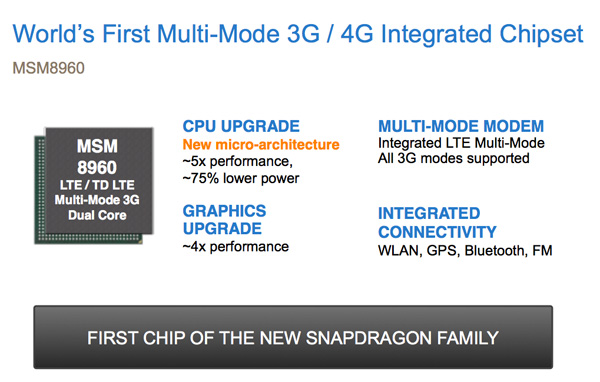
Both the single-core MSM8930 and the quad-core APQ8064 will be sampling in early 2012. The MSM8930 also integrates a 3G/LTE modem but it adds an Adreno 305 GPU. The 305 is supposed to be six times the performance of the original 200. I expect the MSM8930 to be used in upper mainstream smartphones, while the MSM8960 will be more of a high end smartphone SoC.
As an APQ, the quad-core 8064 has no integrated modem but it does have four Krait cores (capable of running at asynchronous clock speeds so core 0 could run at a different frequency than core 3 depending on load). This sounds a lot like a tablet SoC.
The APQ8064 integrates an Adreno 320 GPU, which Qualcomm says offers performance similar to today's gaming consoles. The 320 features four GPU cores. The Adreno 320 is listed as being 15x the performance of the original Adreno 200.
Feeding the CPU cores is LPDDR2 memory interface, although standard DDR3 can also be used. The 8064 also has a PCIe interface and support for up to a 20MP camera.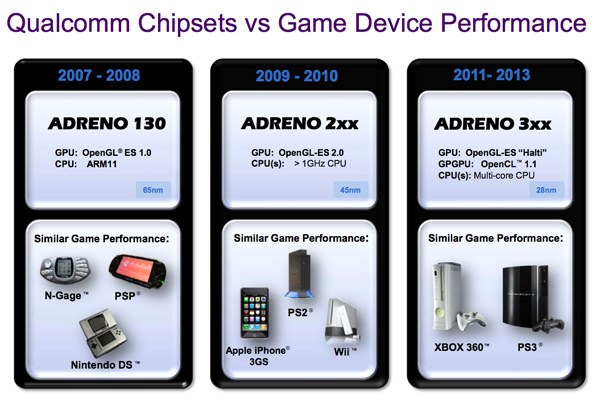
These Krait based SoCs will go up against ARM Cortex A15 based solutions (e.g. TI's OMAP 5) and perhaps even NVIDIA's Project Denver. Intel's Medfield (32nm Atom) SoC will also be a competitor here.
More...
-
02-14-11, 05:00 AM #318
Anandtech: A.C.Ryan PlayOn!HD2 - First Realtek 1185 Media Streamer in the Wild!
AnandTech started covering the media streamer market last year. Thanks to the support of readers like you, the response has been very encouraging. Over the last few months, manufacturers have been willing to talk to us about their proposed products in advance of their launch. This has given us some opportunities to provide feedback and make a request for features that we think are indispensable.
We had already talked about A.C.Ryan's entry into the US market in our CES 2011 coverage. One of the products that was covered in the press release was the second generation PlayOn!HD streamer. The PlayOn!HD lineup was A.C.Ryan's flagship last year, but that position has been taken over by the A.C.Ryan Fluxx. However, A.C.Ryan is continuing their PlayOn!HD product lineup too. This year, we have the PlayOn!HD2 using the next generation Realtek chipset 1185DD.
A.C.Ryan was kind enough to send us a prototype in advance of the official market availability later this month. The firmware is still a bit raw, which means we will postpone the review of the core functionality to a later date. Instead, what we will be seeing today is a look at the hardware platform itself. Read on to get a look at the first Realtek 1185DD based media streamer in the wild.
More...
-
02-14-11, 05:40 AM #319
Anandtech: Intel Shows Off MeeGo Tablet User Experience
While I was scheduling my Mobile World Congress meetings I got an email request from Intel. It wanted to give me a quick tour of the latest MeeGo UI for tablets. MeeGo, as you may remember, was the combination of Intel's Moblin OS and Nokia's own efforts. While MeeGo isn't completely abandoned by Nokia, it's looking unlikely that Nokia will be a major player in it going forward considering the fresh partnership with Microsoft.
Intel is still trucking away with MeeGo and unfortunately appears to be retaining the less-than-ideal name despite the recent shakeup with its partner (at least Moblin sounded respectable, MeeGo sounds like something you say before using the bathroom).
MeeGo is designed to be a mobile OS that can be used across a wide variety of devices. Cars, netbooks, smartphones, tablets and even TVs are supposed to be built around the totally open OS. Intel hopes that MeeGo will be the truly open alternative to Android. It's a lofty goal to say the least. Google officially introduced Android 3.0 earlier in the month and devices based on it are expected to be shipping in the next couple of months. The version of MeeGo Intel demoed for me however is a meager 1.2. While I know that comparing version numbers isn't the most scientific thing in the world, it's the easiest way for me to point out that MeeGo is no where near the maturity level of Android.
The point of today's demo was to showcase the foundation of MeeGo's tablet user experience. Intel's focus here is multitasking. What Intel wants to do away with is the concept of going back to an app launcher to do something else with your tablet. Instead, Intel believes you should be able to launch apps based on what you're doing. It's a subtle difference, but one that's best described by a screenshot.
This is the MeeGo tablet user experience. The screen is treated as a viewport into an infinitely wide and infinitely tall desktop. You scroll from left to right to view more panels, and up/down to view more information within a panel.
Each panel is grouped according to an overall function. The My Tablet panel includes your top applications as well as device settings for when you absolutely need to do something the old fashioned way. The Friends panel aggregates all of your communications between you and your friends. This could be in the form of tweets, Facebook status updates as well as emails and other messages. Everything appears in this one view. If you tap on any of the items in the view, the associated application will launch (e.g. tap an email you received from one of your friends to fire up the email app).
There are also panels for music, photos and websites.
Intel believes that launching applications to later access data with them is silly and you should instead be presented with the data you want and it should launch any necessary application for you. It's a shift from the app centric model of today's smartphone/tablet OSes to a data centric model. Intel feels that this approach will reduce the number of taps necessary to efficiently multitask, which will obviously encourage heavier usage models and ultimately require faster SoCs to run everything.
If the infinitely wide/tall viewport sounds a lot like Microsoft's Windows Phone 7 UI then you're not alone. The concept seems very similar, although it's not nearly as pretty/polished in MeeGo today. For not supporting full blown multitasking out of the box, Microsoft's WP7 UI is very efficient at moving between apps. If MeeGo can duplicate that efficiency and expand upon it, I'm interested.

Microsoft's Metro UI
The bigger issue I see with MeeGo is the huge disconnect between Intel's aspirations and the current state of affairs. If Android is the target, MeeGo needs to make a great deal of progress in a relatively short period of time. These consumer facing smartphone/tablet OSes have to be ridiculously polished, they need to make mechanical toasters look difficult to use, and MeeGo just isn't there yet.
I like the concept. A truly open OS that allows for infinite customization and supports everything from smartphones and tablets to PCs and TVs. We need unification. The last thing I want is to have a HP tablet that can't run the same apps as my iOS smartphone and my Google TV. Unfortunately for Intel I feel like the deck is stacked against it on this. Intel does an amazing job executing on its microprocessor designs, but its extra curricular activities are rarely met with a similar amount of success.
I'm all for more competition so let's see where MeeGo takes us over the coming years.
More...
-
02-14-11, 07:10 AM #320
Anandtech: Intel @ MWC 2011: Atom-Based Medfield SoC Now Sampling, Low-Power LTE Mode
Though we still like to think of Intel first and foremost as a computer CPU company, the fact of the matter is the company is trying its hardest to expand their horizons. Among their expansion efforts are a push in to the smartphone space, and to further that Intel is at Mobile World Congress 2011 making their latest smartphone-related announcements.
The first announcement, and of course the one nearest and dearest to our hearts, is on the CPU side of things. Medfield – Intel’s next-generation Atom-based smartphone SoC is now sampling and will ship later this year. Intel still hasn’t thrown out a solid timeframe for when Medfield will ship, but Q4 is as good a guess as you’re going to get.

Medfield is the follow-up to Moorestown, Intel’s first Atom smartphone-sized SoC design that was launched only 9 months ago, and did not ship until the later half of last year. Moorestown has not had any major design wins, so while it’s out there you probably never have and never will see a Moorestown powered smartphone. As Intel’s first foray in to smartphone SoCs Moorestown had its teething issues – the principle platform was a 2 chip family, with only the Z6xx CPU manufactured in-house at 45nm, while the MP20 PCH containing the PowerVR SGX-based GPU and all other supporting hardware was a 65nm product manufactured at TSMC.
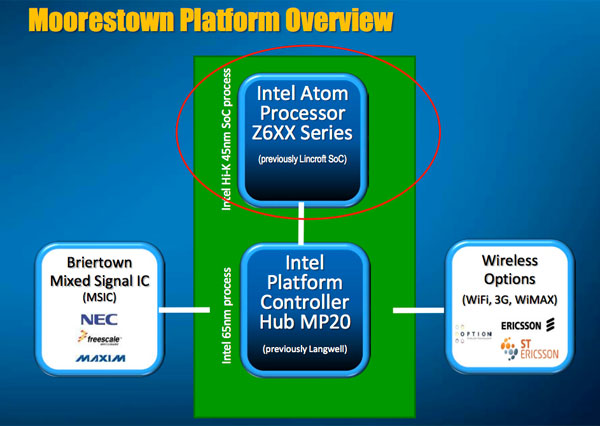
The importance of Medfield in Intel’s product lineup is that it should resolve Moorestown’s teething issues. The CPU and PCH are being integrated on to a single chip, and the entire product is being built on Intel’s 32nm process, which will allow handset makers to more easily fit Medfield in to phones thanks to the reduced chip count. Architecturally Medfield is not a significant overhaul – we’re still looking at a power optimized in-order Atom – but a die shrink for the CPU and effectively two die shrinks for the GPU should go a long way towards increasing performance; the last thing we heard in this respect is that GPU performance should double, while CPU performance has not been commented on. In any case at 32nm by the end of this year, Intel will have a process advantage over its SoC competition, who will still be on 4Xnm until they transition to 28nm some time next year.
Of course Medfield is not an entire smartphone on its own. Additional supporting chips – chiefly a modem – are necessary. As you may recall, Intel picked up Infineon’s wireless solutions business back in August of 2010, giving them modem technology to go with their Atom SoCs. Down the line we’ll see Infineon-derived modems integrated in to Atom SoCs, but for now Intel is still using separate modems developed by the new Intel Mobile Communications group, which is the basis of the other major piece of news coming from Intel today.
Intel’s first compact, low-power multi-mode LTE modem (LTE/3G/2G) will begin sampling later this year, and will ship roughly a year later in H2 of 2012. The multi-mode modem is important both for Intel and for Infineon’s traditional customers. For Intel it’s something to sell alongside Medfield, while for customers after just the modem it’s going to be among the first low-power LTE modems on the market. With the additional complexity of LTE, LTE modems had to be similarly beefed up compared to their 3G brethren, which in turn can hurt battery life. Low-power modems should bring power consumption back in balance with today’s 3G modems.
More...
Thread Information
Users Browsing this Thread
There are currently 18 users browsing this thread. (0 members and 18 guests)





 Quote
Quote
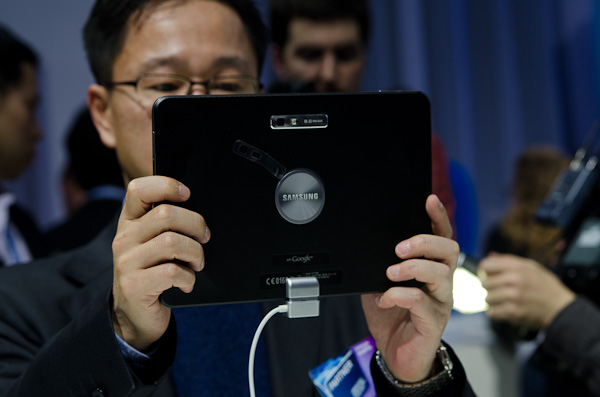
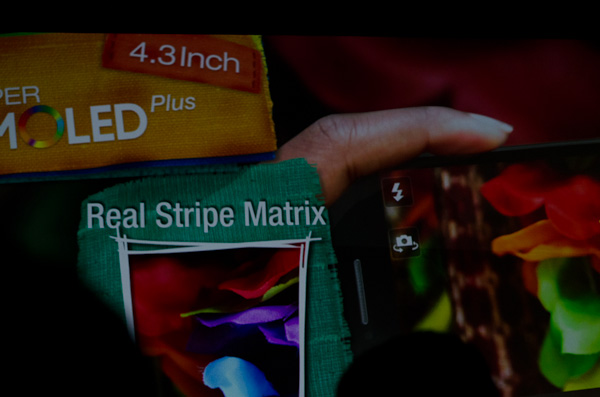
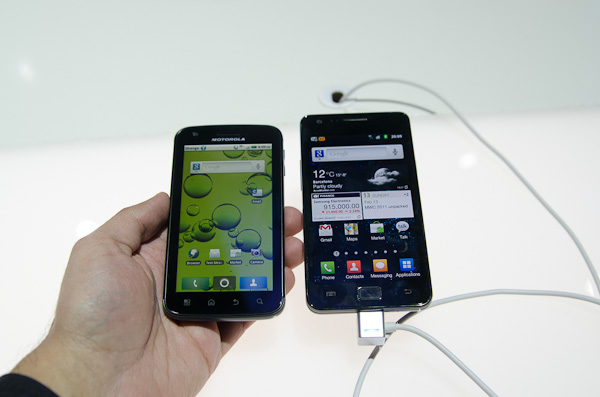
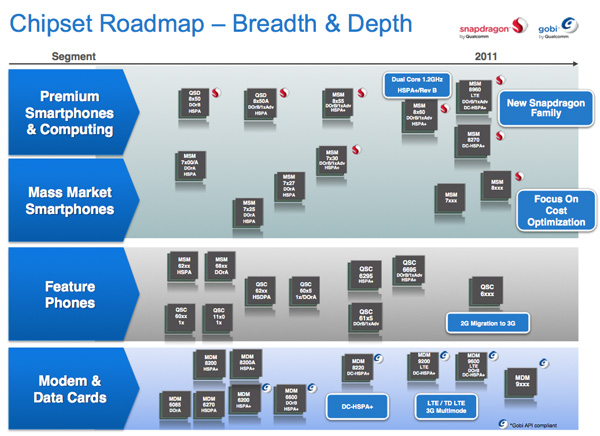
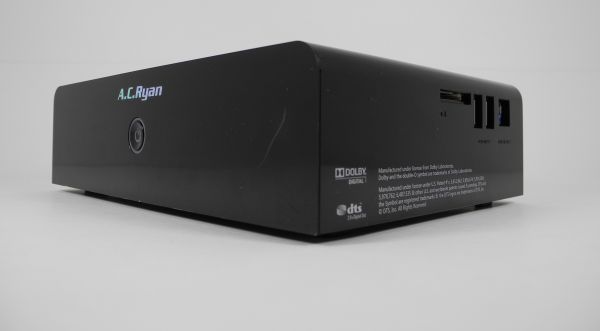
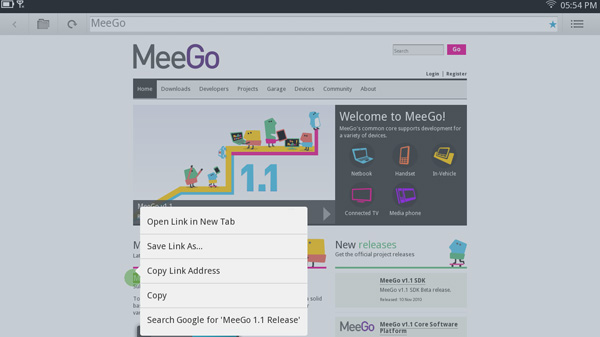

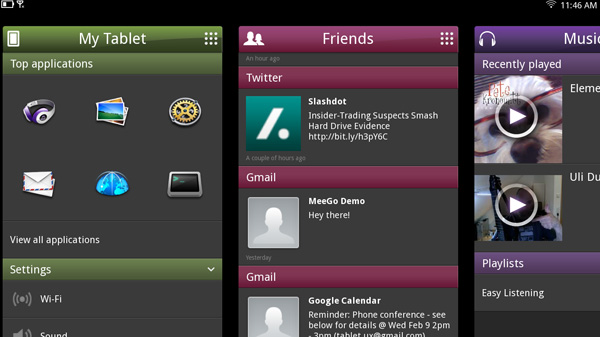
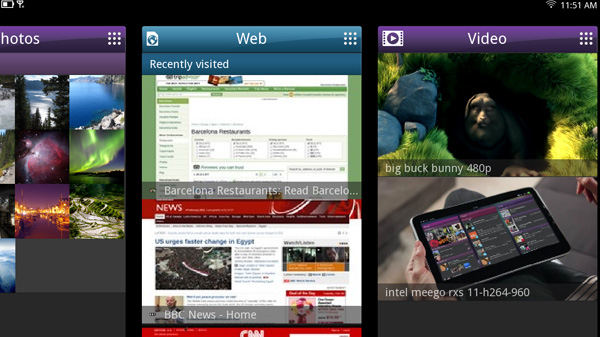
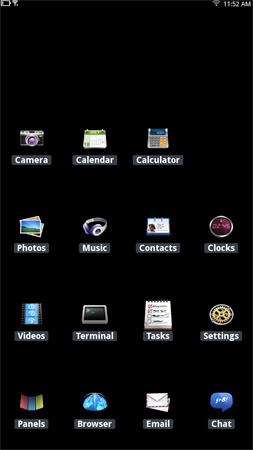

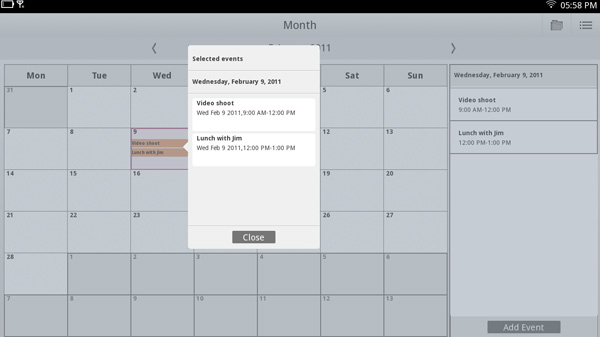
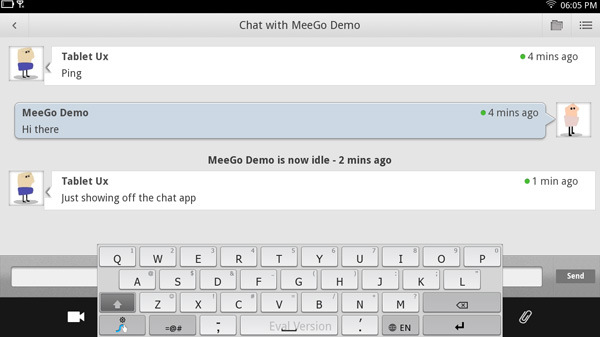
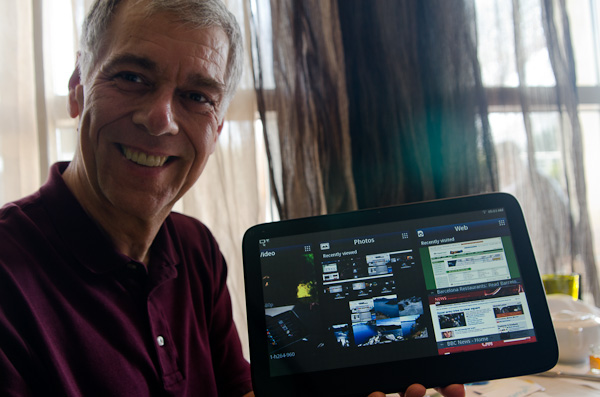
















Bookmarks